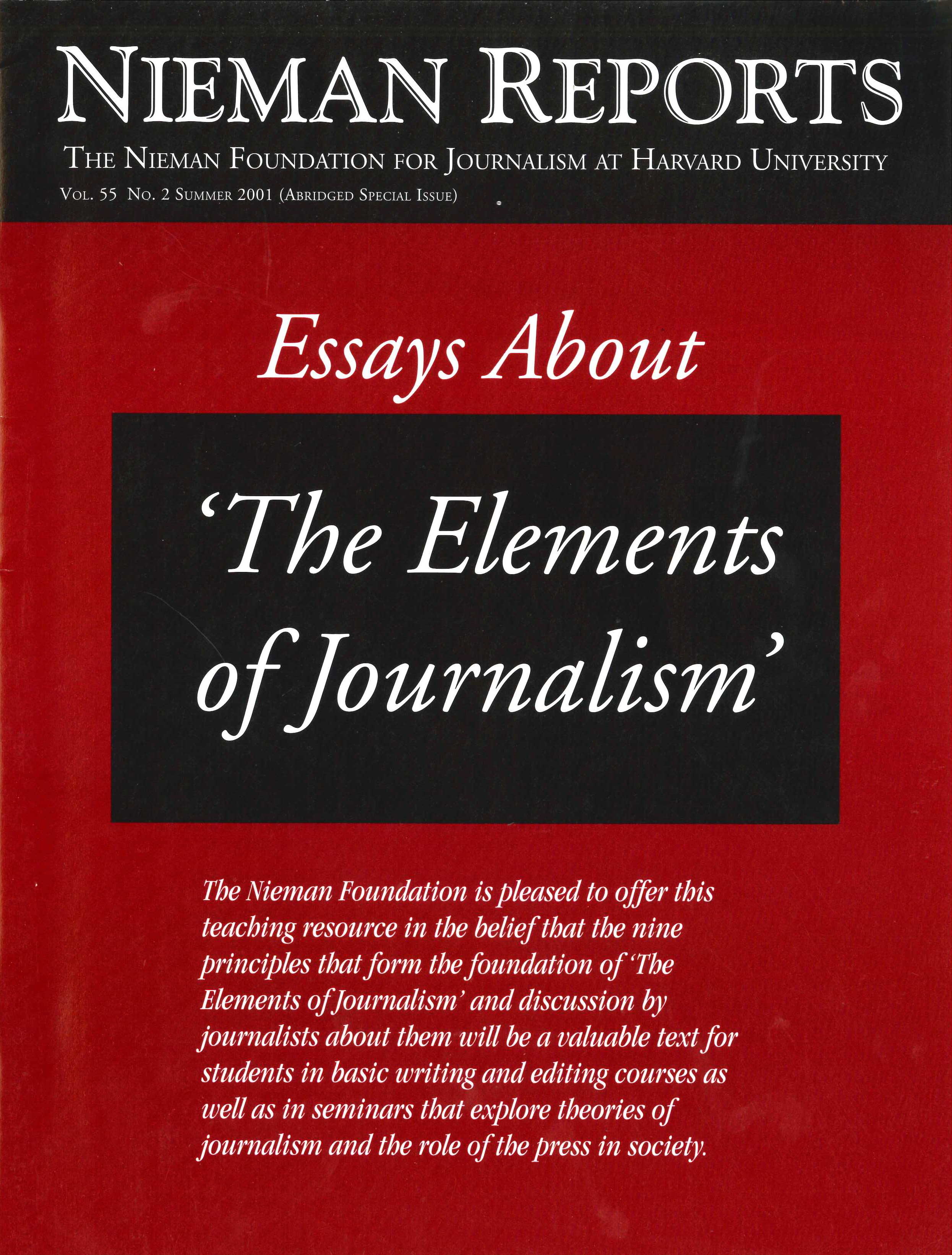A national cable television correspondent was covering a murder trial of a man already serving time on a prior conviction. With a live report minutes away, she asked a young assistant to find out when the defendant was eligible for parole on the prior.
The young woman dutifully made phone calls and relayed her findings. When the on-air reporter asked for the source of the information, the young assistant proudly cited the local newspaper. She was dumbfounded when the correspondent sent her back to call court sources with direct knowledge of the case.
This incident came to mind as I read Kovach and Rosenstiel’s chapter on the process of verifying information. They argue that journalism, as an institution, has failed to adhere to a system for testing the reliability of its reporting. “The modern press culture generally is weakening the methodology of verification journalists have developed,” the authors write. “Technology is part of it.”
After 25 years of reporting that spans radio, UPI, newspapers and, since 1995, network television newsmagazines, I share the authors’ concerns about slippage in the fact-finding process in journalism and how it can erode our credibility. Unfortunately, anyone pondering this complex issue in the context of broadcast journalism gets no help from Kovach and Rosenstiel. The authors fail to include insightful or substantive examples from television or Internet news reporting in their analysis of the verification process in “modern press culture.”
The anecdote mentioned above illustrates a troubling phenomenon in network TV. While seasoned reporters fill the top ranks, many of the support staffers—who actually do much of the reporting—have little or no journalism training.
Although I’ve long admired Bill Kovach for his integrity and advocacy for traditional news values, I’m disappointed that he and Rosenstiel did not lend their experience and thoughtfulness to an examination of this and other issues in broadcast media. Instead of citing aired pieces in which techniques of verification have been blurred, they point to TV “docu-drama” as an example of adding fiction to fact for better storytelling. I’ve never heard anyone in TV news use the term. The authors write: “If a siren rang out during the taping of a TV story, and for dramatic effect it is moved from one scene to another…what was once a fact becomes a fiction.”
It would have been more useful to discuss a case like this: As a producer, I build an opening sequence for a crime story by showing close-ups of yellow crime scene tape with the sound of sirens underneath. The sirens and the tape are not the actual footage of the crime scene because those images don’t exist. But if I create a combination of images that portray a crime scene, don’t present them as being the specific crime scene in question, and get all the facts of the case correct, am I crossing the line into fiction because of my opening sequence?
Predictably, the use of hidden cameras is discussed briefly under “misleading sources.” While I believe hidden cameras have been overused and improperly used by various local and network news shows, when used wisely they can provide the ultimate level of verification. Seeing is believing. It’s compelling TV and good journalism when hidden cameras let viewers see and hear the misleading sales pitch, the abusive child-care worker, the dishonest employee.
In a report on the illegal trade of exotic animals and the serious dangers they pose as pets, I used a hidden camera to show the availability of baby tiger cubs in Texas. I went to a roadside zoo advertising them for sale on the Internet. I used my real name and my real phone number when I responded to the ad and when I showed up. Yet I did not tell the sellers that I worked for “Dateline NBC” and had cameras rolling.
Using the Kovach/Rosenstiel guidelines, was I deceptive? I don’t think so, nor did the senior producers and lawyers who reviewed the material and my script. In the two years I’ve worked for NBC, there has been a rigorous approval process involving senior producers and legal and standards attorneys before hidden cameras can be used. And the network publishes a 70-page policy manual that spells out its policies and standards on reporting, use of anonymous sources, and a variety of other news practices. I’m no shill for NBC, but I was heartened during my second week on the job to attend mandatory meetings to discuss and debate ways to raise standards in our reporting process.
It’s the kind of effort that can help create the system of verification that Kovach and Rosenstiel find so lacking in the industry. And while I wholeheartedly agree with many of their criticisms, they missed an opportunity to explore this from the perspective of broadcasting—perhaps the most powerful force in our industry.
Olive Talley, a 1993 Nieman Fellow, was a Pulitzer Prize finalist and a George Polk winner for her newspaper work. Since 1995, Talley has worked as a TV producer for “PrimeTime Live,” “20/20,” and most recently for “Dateline NBC.”


